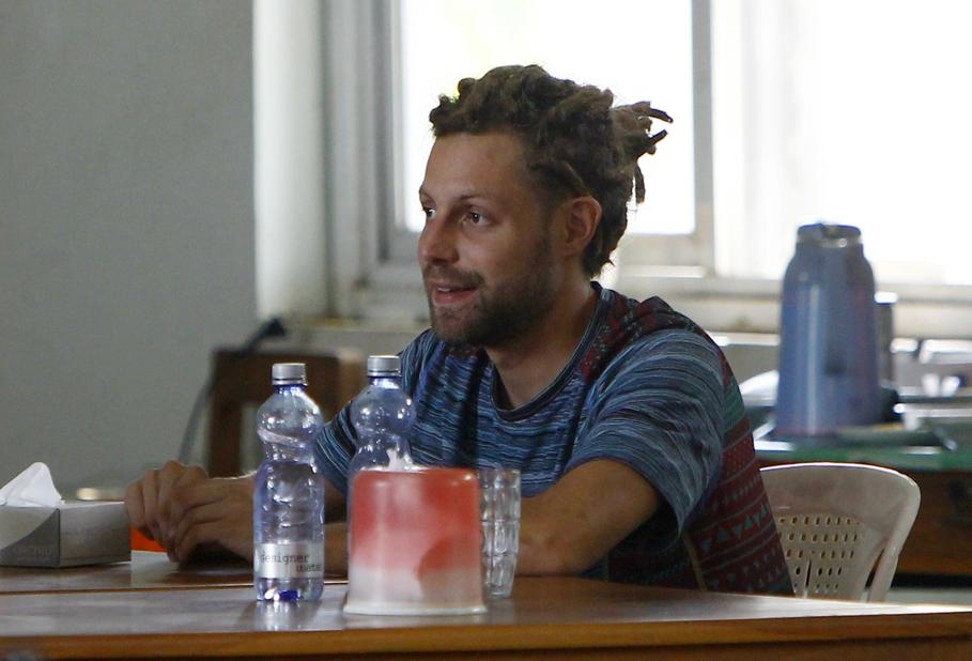
How drones can ruin your holiday: the buzzing eyes in the sky are even more annoying than selfie sticks
- The small unmanned aerial systems that revolutionised warfare also have the power to spoil your vacation, whether you are the pilot or not
- Recent arrests, as well as grounded flights and flying bans illustrate the impact the divisive devices can have

Forget the selfie stick, there is an even more irritating menace to modern travellers; one that has the power to ground flights, ruin holidays and make a persona non grata of its handler.
Whether over a remote Thai beach or one of Sri Lanka’s national parks, the distinctive buzz of a small unmanned aerial system (sUAS) will infuriate even the most happy-go-lucky of holiday-goers, eliciting expletives and making middle fingers stiffen as it hovers overhead. American space agency Nasa has even studied what it calls “the annoyance generated by sUAS noise”, concluding, unsurprisingly, that people find the sound of a drone rather irritating.
On March 17, The Times of India reported that 34-year-old Chinese tourist Li Zhiwei had been arrested in Kolkata for flying a drone around the city’s Victoria Memorial. Although the use of such gadgets is widely permitted in India, there are a number of no-drone zones – near airports, international borders, military complexes and government buildings – and Li’s remotely piloted photographic device had infiltrated the airspace of one of these.
“He has violated the Aircraft Act that specifically says no one can fly an object within 3km of a military base,” said the lawyer for the prosecution in court. Despite pleading ignorance, Li’s misdemeanour landed him eight days in custody.
Lest that not be lesson enough, Frenchman Arthur Desclaux was sentenced to one month with hard labour in a Myanmese prison in February for bringing his device into the country without a licence and for sending it soaring over parliament. Quel idiot!

And it’s not just the pilots who suffer in pursuit of aerial photography. In December, about 1,000 flights were cancelled or diverted from Britain’s Gatwick Airport after drones were sighted near the transport hub, affecting 140,000 people. A couple were arrested, accused of being “the morons who ruined Christmas” on the front page of a British newspaper, but later released without charge. The phantom droners were never apprehended, assuming they ever even existed.
Then there is the fact that these gizmos are just a bit creepy. Drones emerged in the early 2000s as weapons of war, a machine capable of killing and mass surveillance, and this association has been difficult to shake. As the late Stanford University professor Clifford Nass, known for his work on human-computer interaction, told news site The Daily Beast, “a camera merely sees” whereas “a drone seems to watch”.
Of course, there are a number of situations in which sUAS play a vital, humanitarian role – such as providing relief in hard-to-reach disaster areas – but in the hands of hobbyists on holiday isn’t one of them. The divisive devices are banned at tourist hotspots from Tokyo’s Imperial Palace to Lumpini Park in Bangkok, and anyone wishing to fly them on vacation should not only acquaint themselves with the destination’s regulations but also consider who, or what, they might be disturbing – after all, as eagles across the world and Siberian tigers in China have shown, it’s not just humans who have taken a dislike to buzzing drones.
A giant turtle is Hanoi’s latest embalmed attraction

For dark tourists, a visit to the Vietnamese capital is incomplete without paying Uncle Ho’s embalmed body a visit at the Ho Chi Minh Mausoleum, but his remains aren’t the only ones in Hanoi to have been preserved for posterity. Cu Rua, the sacred giant turtle that occupied Hoan Kiem lake and was revered as a symbol of the nation’s struggle for independence, has been put on display at the popular Ngoc Son temple, in the middle of Hoan Kiem.
The turtle, whose death in 2016 was viewed as a portent of troubled times, was believed to have been between 80 and 100 years old and the last of a long line of turtles that lived in the lake.
“It’s great to see it here,” tourist Tran Thi Anh told AFP. “Everyone can see it now, a symbol of Hanoi.”
Tourist almost washed away at popular Indonesian selfie spot
Devil’s Tears, on the island of Nusa Lembongan, off the southeast of Bali, Indonesia, is popular with sunset and selfie seekers, who flock to the rocky promontory in the hope of witnessing (and photographing) the power of nature. However, human tears were nearly shed, after one tourist got a little too close for comfort, a huge wave almost washing her into the ocean.
Footage of the near calamity went viral on Chinese social media and the short video was shared by Bali-based Facebook and Instagram accounts to warn visitors of the dangers of standing too close to the edge.
The traveller was seemingly unhurt, suffering only minor scratches, but perhaps next time she’ll send in a drone to get that killer shot.